Everyone has personal food preferences, and we know that it’s not always polite to “yuck someone’s yum.” But – let’s face it – some foods just really have no reason to exist. In fact, we wouldn’t mind if they were completely banned from the face of the earth altogether.
The more time you spend traveling the world (and hopefully discovering its absolutely wild and infinite array of food), the more you learn to respect the customs of other cultures, especially the foods that they eat. For example, most Americans will probably tell you that haggis – an ugly, brown pile of mashed up sheep heart, liver, and lungs along with oatmeal and spices, cooked inside the animal’s stomach – is about as offensive and illegal as food gets; in fact, it is actually illegal to serve in the U.S. due to the presence of lung. But in its native Scotland, it’s a beloved aspect of the country’s core culinary identity, and the star dish of a traditional “Burns’ Night.” Heck, some cultures even drink fresh animal blood for ceremonial purposes, and who are we to judge? If you’ve ever seen an episode of Andrew Zimmern’s “Bizarre Foods,” you’ll probably agree.
No, our bugaboo is with foods that serve little to no cultural or ceremonial purpose. These foods are the “stunt” foods created exclusively for publicity, the foods that are truly inedibly disgusting, the canned foods that have inspired horrified recoils, the foods invented just to capitalize on (or to ride the coattails of) a trend, the poor imitations of a far superior food.
If you happen to love these foods, or if they happen to be a part of your family, we’re obviously not going to fault you or judge you. As mentioned, personal preference is personal preference, and you’re allowed to eat whatever you want. Want to put Lucky Charms on your pizza? Do it! Feel a hankering for a hot dog with grape jelly on it? You do you. Want to indulge in some of the craziest state fair foods of all time? Go for it. But if you start eating a whole chicken out of a can or any of these other foods that should be banned, then, well, have fun — these are 20 of the strangest foods ever seen at fair foods across America.
The Fool’s Gold Loaf
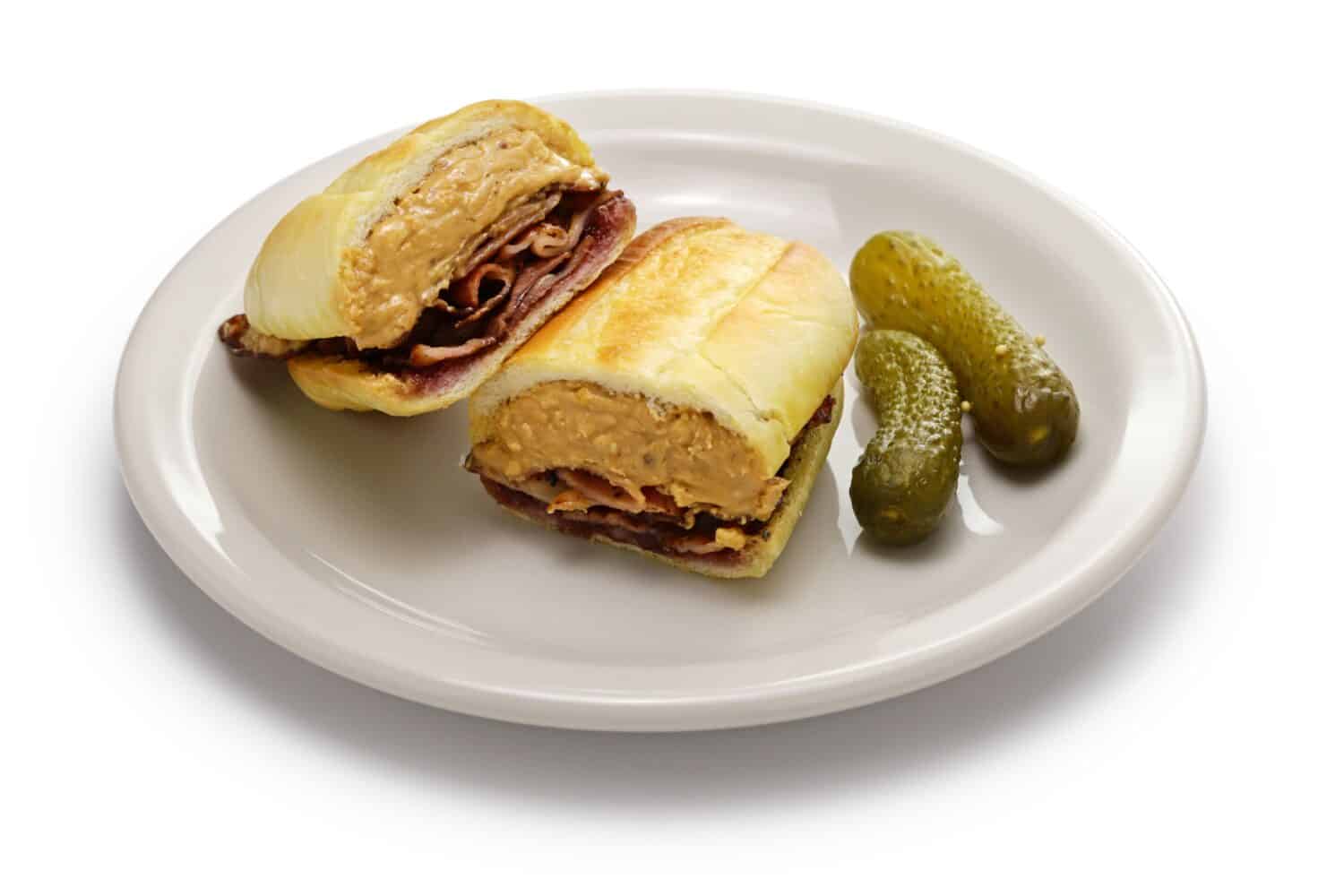
This monstrosity was created by (or for) none other than Elvis Presley, which isn’t exactly a ringing endorsement. Invented for The King at a restaurant in Denver called the Colorado Mine Company, it’s an entire hollowed-out loaf of bread that’s filled with an entire jar of peanut butter, an entire jar of grape jelly, and – just for kicks – a full pound of bacon. Word has it that Elvis preferred blueberry preserves. This may be fit for a king, but maybe not for us mere mortals.
Casu Martzu Cheese
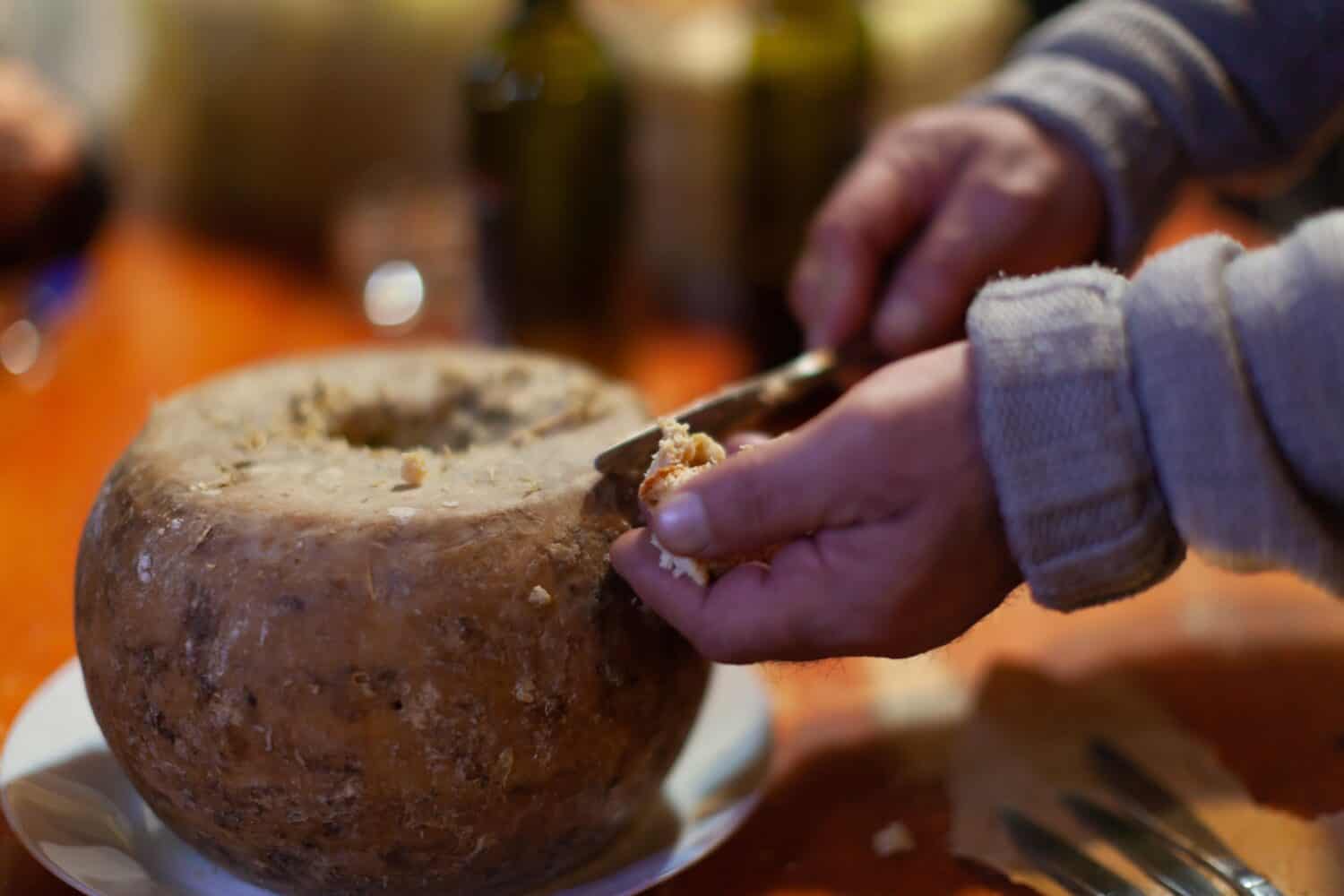
There’s cheese, there’s stinky cheese, and then there’s the absolute nightmare known as casu martzu. A Sardinian delicacy, this cheese wins the gold medal for perhaps the rankest, most head-scratching cheese ever created. It starts off as your standard wheel of firm sheep’s milk pecorino, but it completely goes off the rails from there: live maggots (specifically, the larvae of the Sardinian cheese fly, which exists) are introduced to the cheese, and as they worm their way through it, they eat the cheese and, shall we say, soften it as they pass through. The cheese is then eaten, thousands of worms and all. This cheese is actually illegal and only available via the Sardinian cheese black market (which, again, exists) because eating the live maggots are shockingly not very great for the intestinal tract.
Whole Chicken in a Can
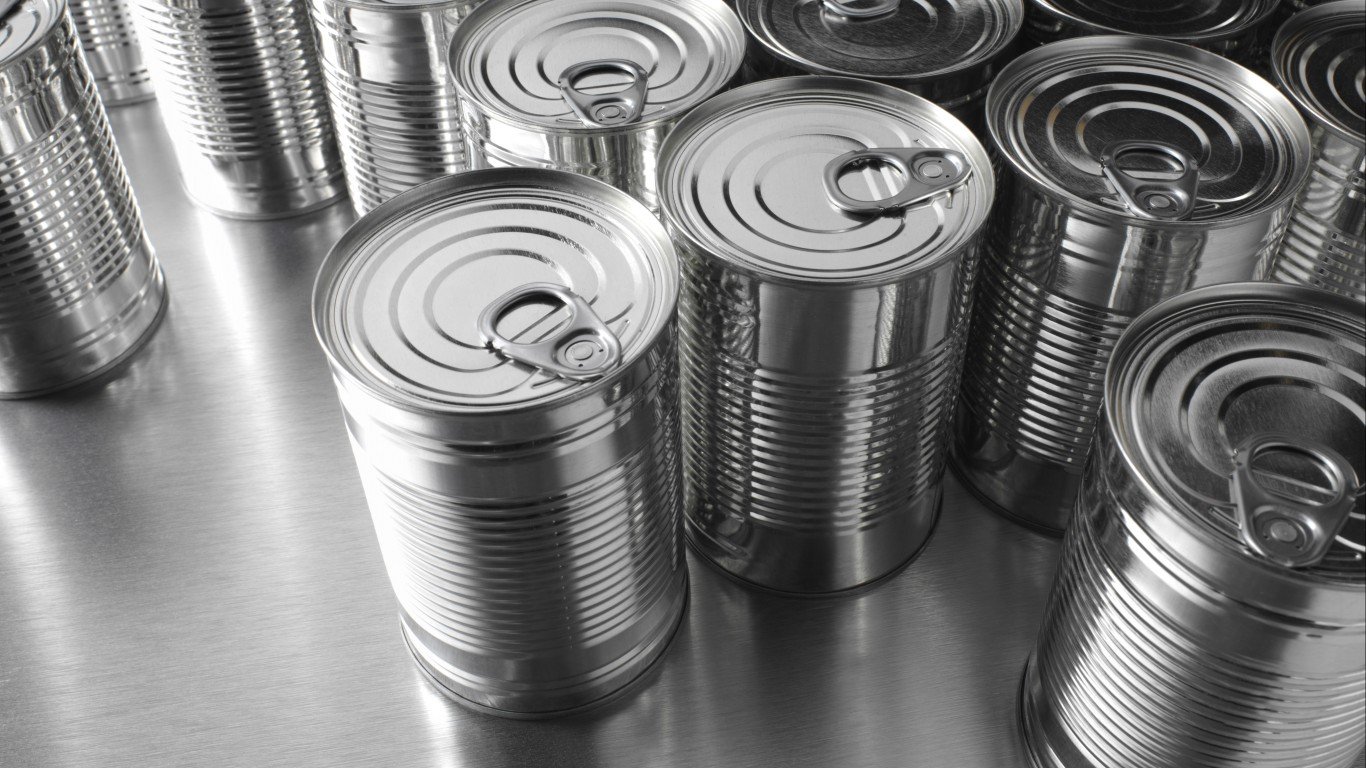
A mainstay of Food Network’s “Chopped,” Whole Chicken in a Can is just what it sounds like: a whole, cooked chicken inside a large can with some broth to slosh around in. Based on reviews, the chicken meat itself is mushy to the point of being soggy (such is life inside a sealed airtight can) and the less said about the skin, the better. Unless you’re a doomsday prepper who thinks you might one day want a nice mushy canned chicken dinner, you should probably just get a rotisserie chicken at Costco for less money.
Pork Brains in Gravy

Here we have another canned food that’s unfortunately just what it sounds like: pork brains, in a milk-based gravy. We hear that some folks may like to put them in their scrambled eggs, but if there’s another use for them – besides perhaps fending off zombies during a zombie apocalypse – we’ve yet to hear it. Oh, and apparently brains are also incredibly high in cholesterol; one serving has 3,190 milligrams, more than a full day’s recommended dose.
Hakarl
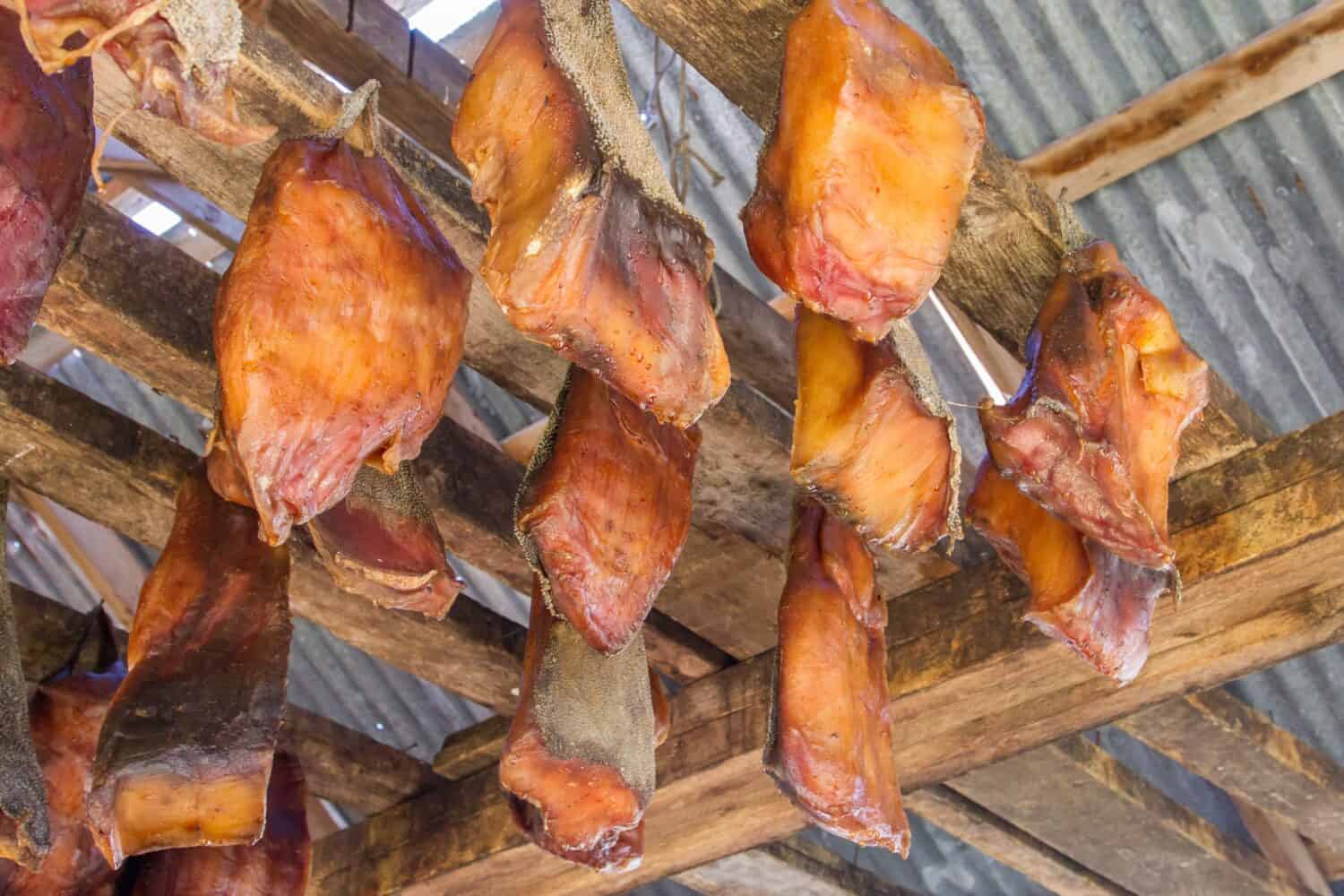
Do you prefer your fish to be fermented months before you eat it? Do you prefer it to have a nice, rich ammonia flavor? Then Hakarl is for you. Yes, it’s one of Iceland’s national dishes and does have some cultural relevance there, but Hakarl is so unpalatable to those who haven’t acquired the taste that we’re going to come out and say that the world would be no worse off without it. Created hundreds of years ago as a way to make Greenland shark edible by lowering its toxic chemical content, hakarl is made by burying a gutted and beheaded shark in sand and gravel, and pressing it with rocks, for up to three months. This precess removes moisture and ferments it, and then it’s sliced into strips and hung for several more months to cure. It’s then sliced into small chunks or thin slices before being eaten, usually with a chaser of very strong booze. It has a very high ammonia content, so it’s advised that you hold your nose when you eat it – literally.
“Pancake Syrup”

If you’ve ever had real maple syrup – that is, pure syrup made by boiling down the sap of maple trees, and not the cheap stuff labeled “pancake syrup” in plastic bottles on supermarket shelves – then you probably already know why pancake syrup is on this list. Real maple syrup is an artisanal product, with a rich, deep flavor that automatically elevates everything it touches. Top your pancakes or French toast with it, and suddenly you’re having a gourmet experience. Top your pancakes with fake “pancake syrup,” made with high fructose corn syrup, caramel color, and artificial flavoring, however, and it should be obvious that there really is no comparison.
Truffle Oil
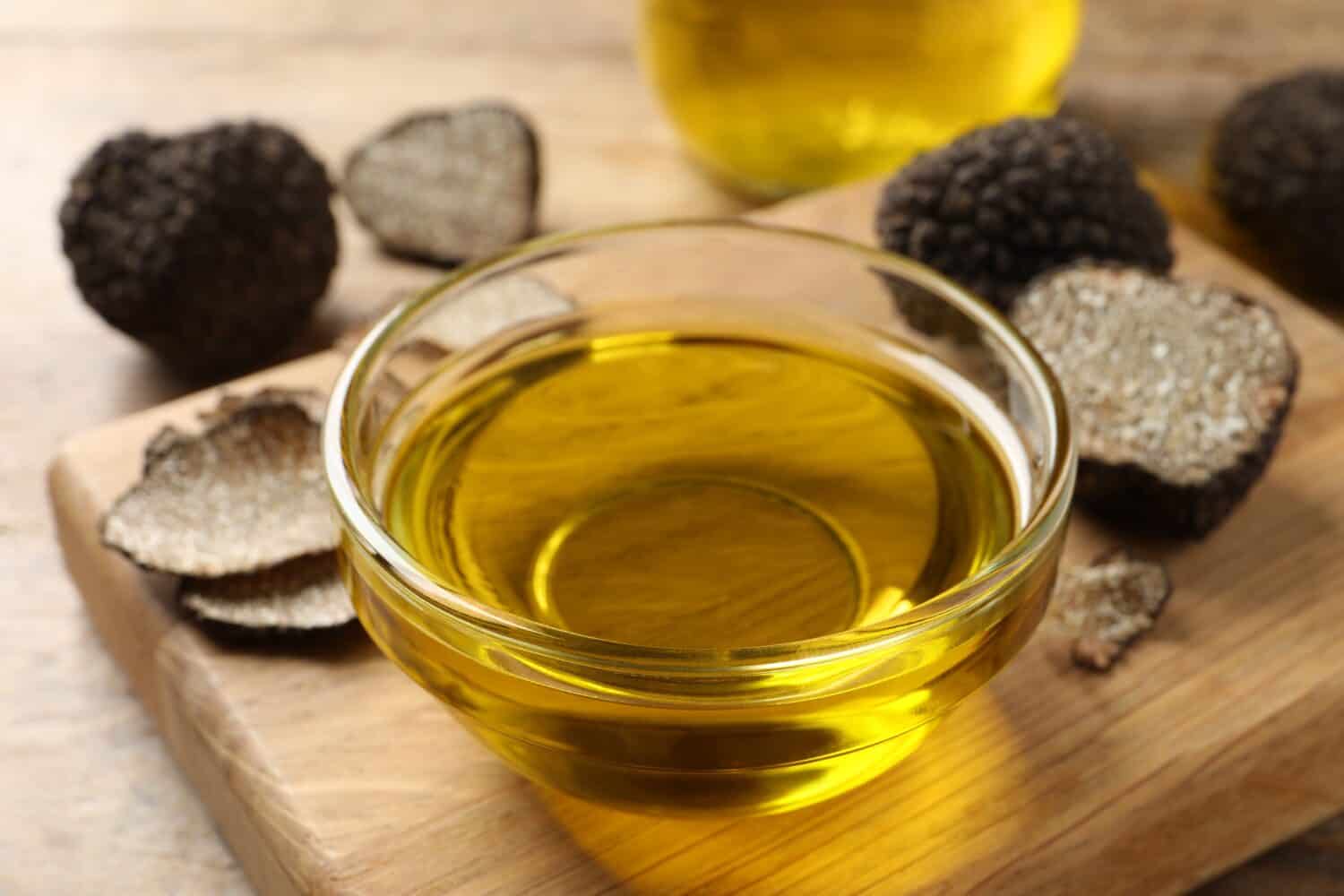
In the same vein, truffle oil is also a sad, poor imitation of the real thing. If you’ve ever had the privilege of experiencing real, freshly shaved truffles on your food – over a bowl of fresh pasta, perhaps – then you know that the tuber has an almost imperceptibly delicate flavor and an aroma that can only be described as heavenly. Truffle oil, on the other hand, doesn’t actually contain any real truffle; it’s made with a chemical compound called 2,4-dithiapentane that kinda, sorta smells like truffle. There are perhaps a couple valid culinary uses for s miniscule amount of truffle oil, like scrambled eggs, mashed potatoes, or salad dressing, but leaving it off certainly doesn’t harm the finished product.
Weird Novelty Sodas
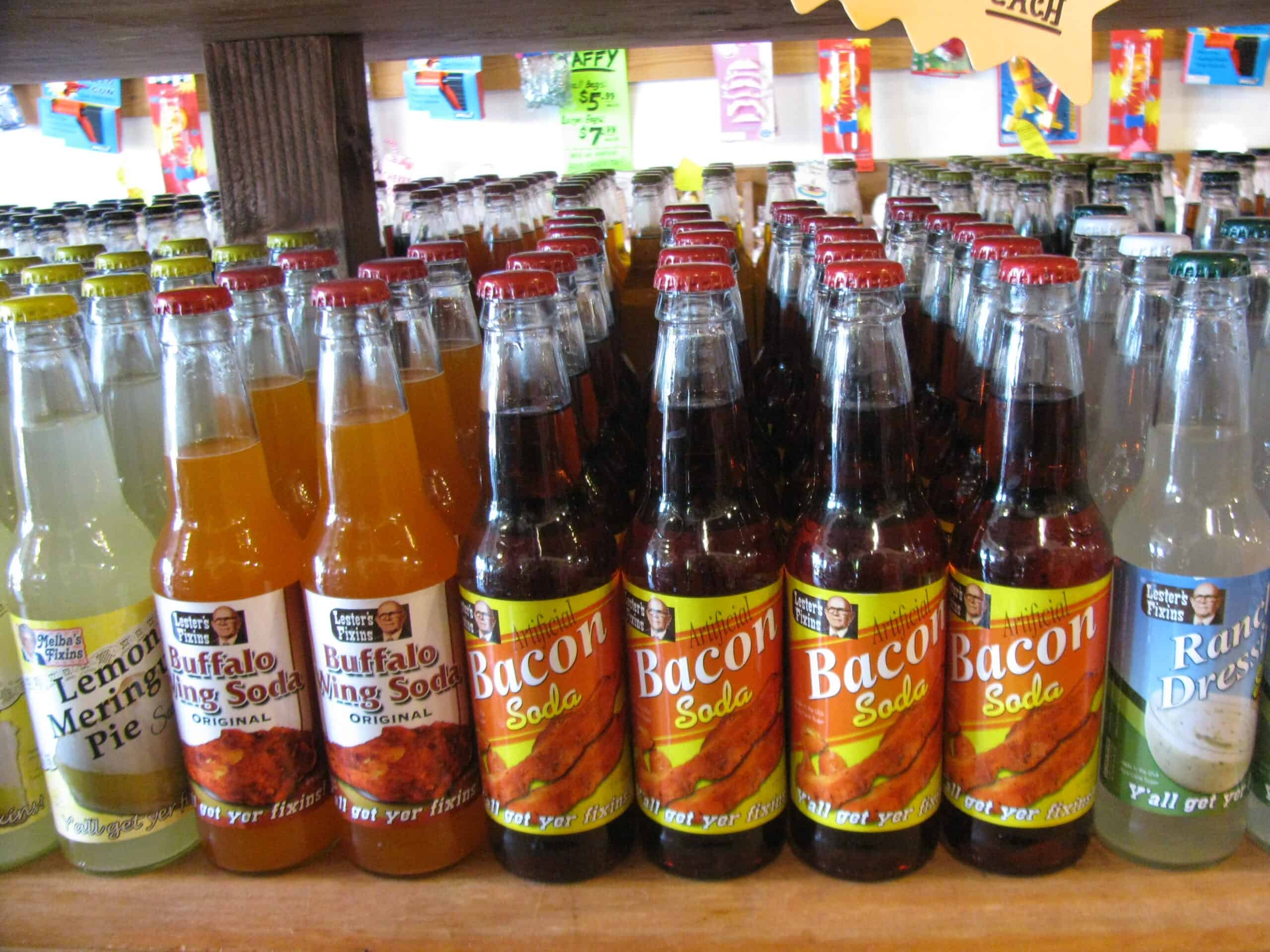
You know what nobody ever said while enjoying their lunch? “Man, I can really go for a nice, cold battle of fizzy sparkling Buffalo wing flavored soda.” Or pickle flavored soda. Or dirt flavored soda. Or bacon flavored soda. Or spaghetti flavored soda. Or ranch dressing flavored soda. Or corn flavored soda. Yes, all those things exist. And no, none of them have any reason or right to.
Ridiculously Monstrous Burgers
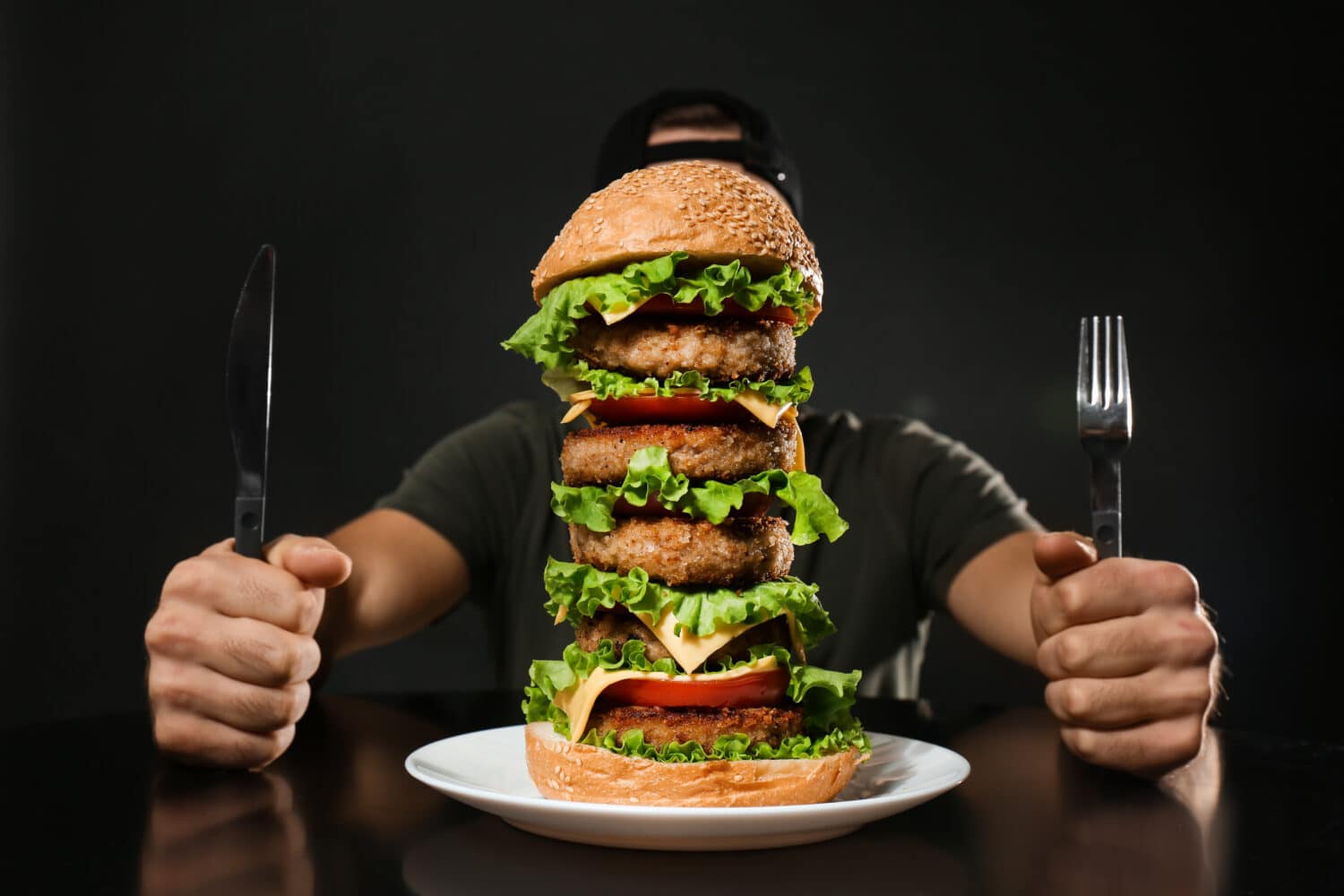
A nice cheeseburger is one of the most perfect, delicious foods in existence. Most restaurant burgers average around six to eight ounces of beef, and toppings stay pretty standard – bacon, cheese, jalapenos, fried onions, etc. But the minute a chef decides to pile more than two half-pound patties onto their burger and top it with literally every ingredient in their kitchen, we’re entering “completely superfluous and unnecessary” territory. Ask yourself: Did this chef invent this burger because he thought it was a nice, well-balanced meal? Or because he wanted to go viral and maybe show up on a TV show or two? If the answer is the latter, it’s not worth the heartburn.
Rainbow Bagels

The “rainbow everything” trend is thankfully beginning to settle down, but one rainbow food has remained peskily omnipresent: rainbow bagels. We’ve even started seeing them in our local supermarket! Just like green and purple ketchup had no right to exist (and thankfully no longer do), bagels are simply not supposed to be technicolor. And here’s a little secret: rainbow bagels still taste exactly the same as plain bagels. If you need your bagel to be swirled with color in order for it to be enjoyable, you probably just shouldn’t be eating a bagel.
“Hand Salad”
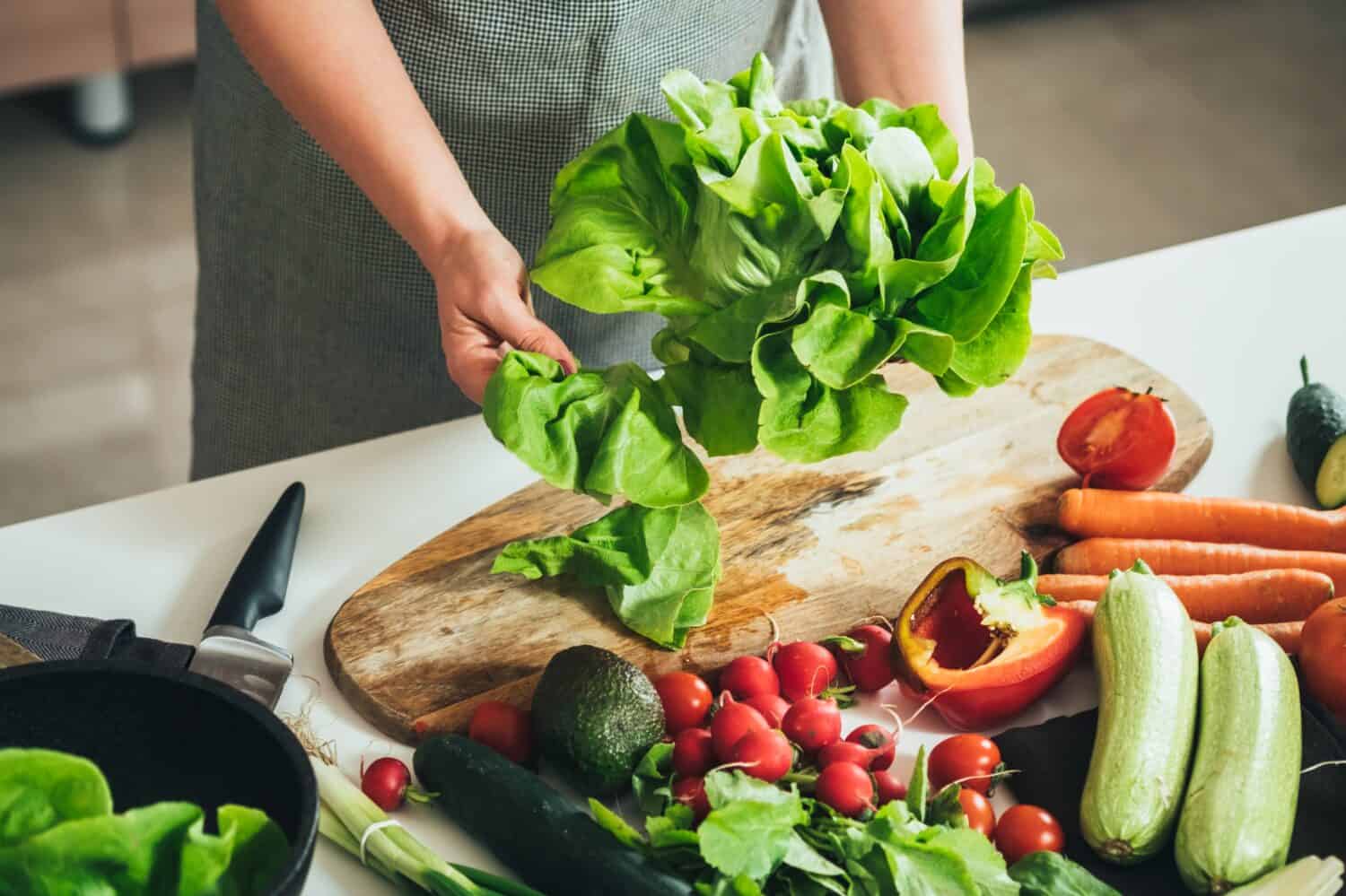
There’s not too much to say about this one: It’s just a salad that’s presented in a way that you eat it with your hands. So for example, the romaine leaves are all sticking up and you dip them into your Thousand Island and eat them one at a time with your hands. Is this supposed to be fun or something?
Imitation Crab
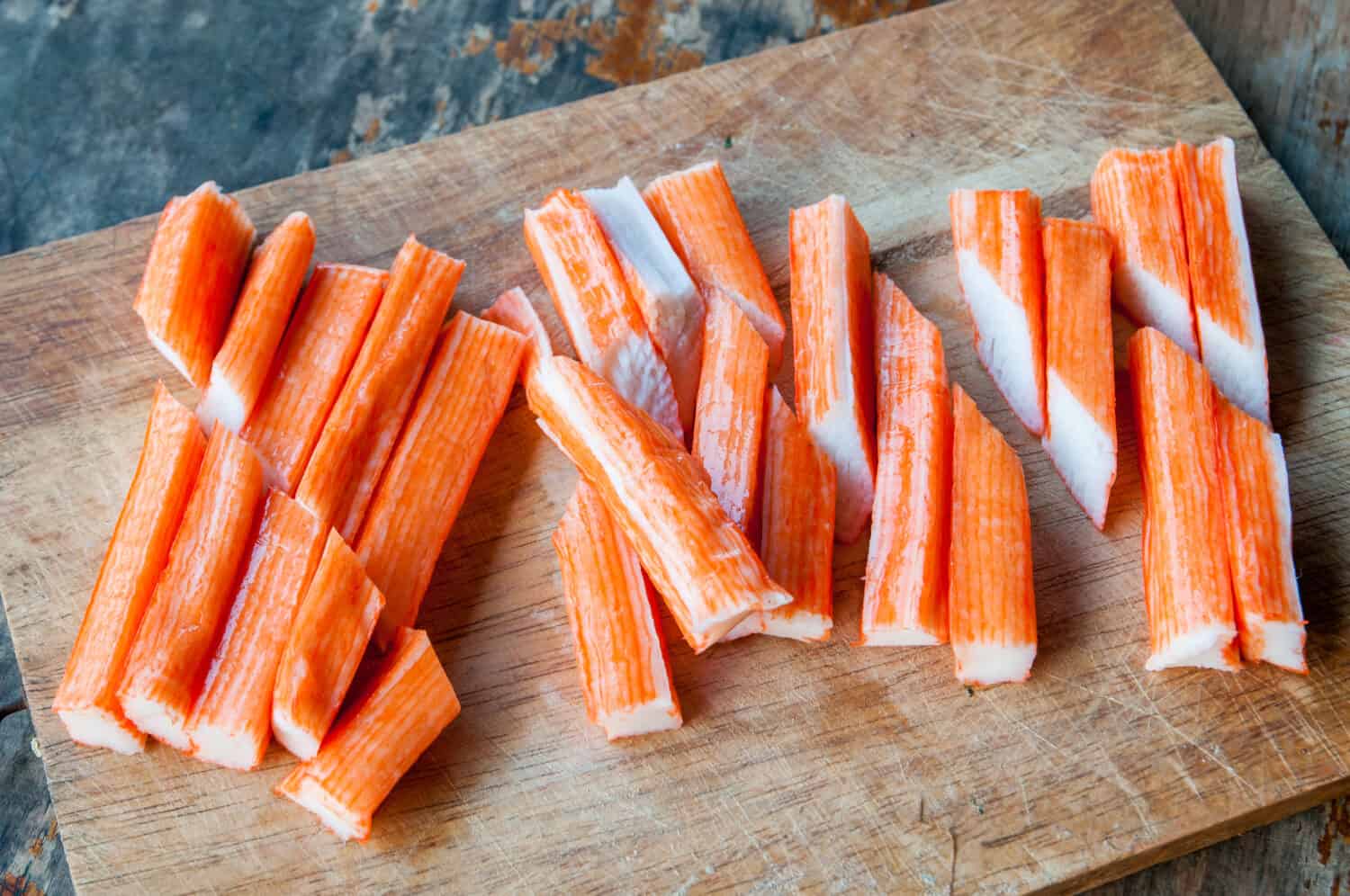
Usually found in sushi rolls and behind the supermarket deli counter as “crab salad,” imitation crab is actually about as far away from real crab as it gets. Also called crab stick, it’s made by grinding white fish (usually pollock) into a fine paste and mixing it with fillers and binders including wheat, egg white, and transglutaminase (also called “meat glue”). It’s then formed into a log, coated with red food coloring, and sliced into a shape that resembles crab leg meat. If you would like some crab, may we suggest that you eat some actual crab.
Stargazy Pie

Okay, maybe this one can be allowed to continue to exist, if for no other reason than pure entertainment value. It’s a traditional Cornish savory pie that’s filled with potatoes, eggs, milk thickened to a gravy-like consistency, and fish, traditionally sardines, mackerel, or herring. One thing, though: the pie needs to be constructed so the fish heads are facing upwards and poking out of the top of the pie (they’re “gazing at the stars”, get it?). It’s an extremely silly, extremely British food.
Chocolate Hummus
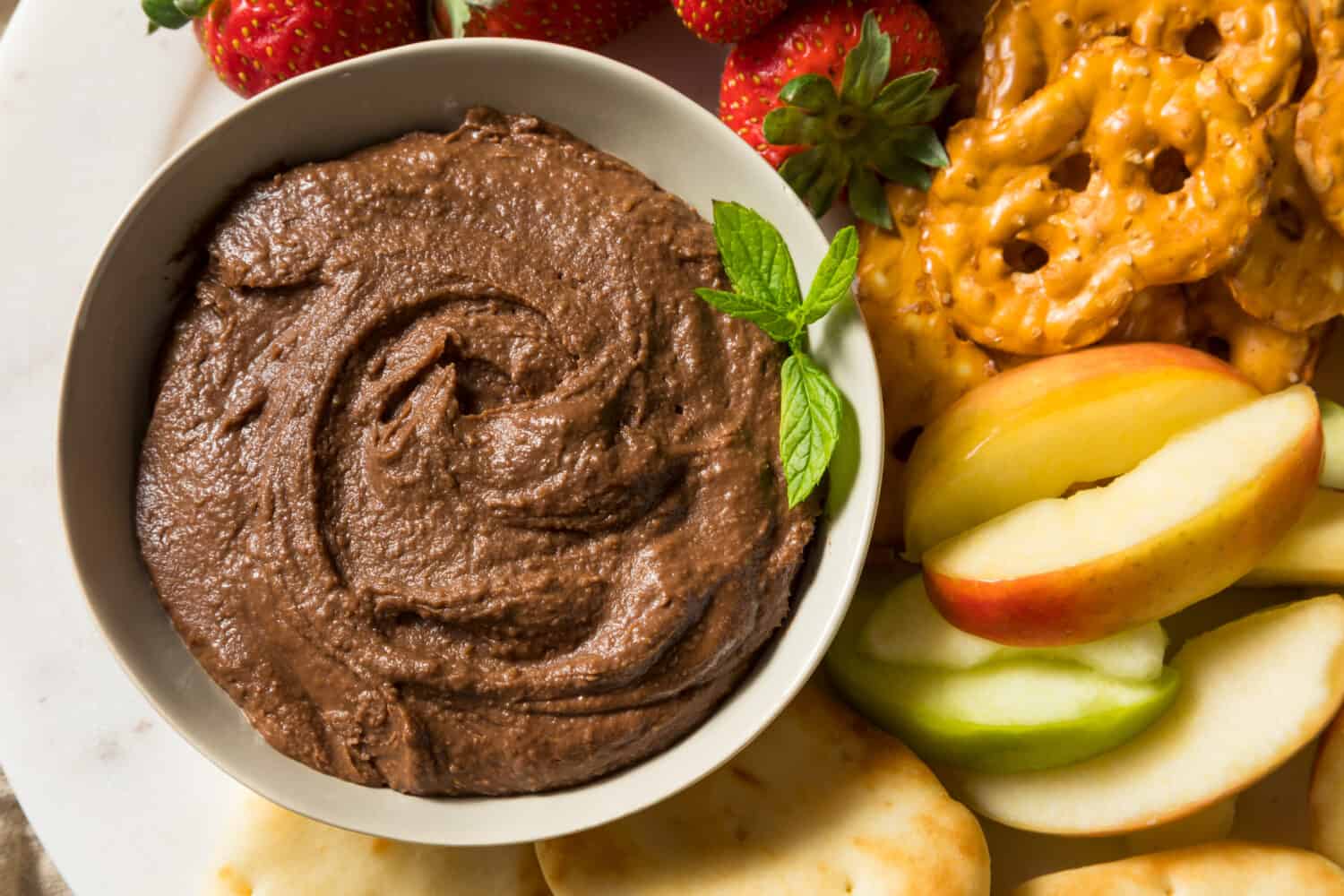
Hummus is a true Middle Eastern delicacy, made by pureeing chick peas with sesame-based tahini, garlic, good olive oil, and a squeeze of lemon. Perhaps some pine nuts or a sprinkle of paprika can garnish, and all that’s needed is some pita to scoop it up with. One thing it doesn’t need? Chocolate. Just because hummus has become super-popular in the U.S. in recent years doesn’t mean it needs to be turned into a dessert.
Fast Food Mashup “Hacks”

If you’re the type of person who’s obsessed with “hacking” your Starbucks order, either by asking for an unholy array of squirts and shots or by jumping on the bandwagon and thinking that you’re ordering from the “secret menu” by asking for a Skittles Frappuccino or a Caramel Snickerdoodle Macchiato, you’re also the type of person the barista hopes stays home. And the same goes for those overplayed “secret menu” items at fast food chains like McDonalds, where every few years someone thinks they’ve cracked some secret code by ordering a Big Mac with McChicken patties instead of buns. In fact, they’re just jumping on the bandwagon of following one of history’s biggest food fads.
